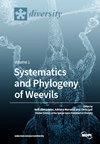Ecology and Diversity of Angiosperm Parasites and Their Host Plants along Elevation Gradient in Al-Baha Region, Saudi Arabia
IF 2.1
3区 生物学
Q2 BIODIVERSITY CONSERVATION
引用次数: 0
Abstract
The ecology and diversity of flowering parasitic plants and their hosts are poorly investigated and usually ignored in Saudi Arabian plant communities. Therefore, this work aimed at assessing the ecology and diversity of parasitic plants and their hosts along an elevation gradient in the Al-Baha region (1300–2400 m.a.s.l.). Different quantitative vegetation parameters were applied to analyze the collected data. Eight parasitic plants from six genera and four families were identified along the gradient, with 67% of them being zoochorously dispersed species. They accounted for approximately 23.5% (8 out of 34) of those found throughout Saudi Arabia. Perennials, stem hemiparasites, and biregional taxa accounted for around 62.5% of the total parasites, whereas indigenous species accounted for 75%. The dominant family of parasitic species was Loranthaceae (50%), and Phragmanthera austroarabica A.G.Mill. & J.A.Nyberg was the most important species (IVI = 107.28). Orobanche cernua Loefl. and Loranthella deflersii (Tiegh.) S.Blanco & C.E.Wetzel were restricted to the dry zone (low elevation) only, while the other parasites were distributed across the surveyed region. Twenty-three host plants were identified throughout the study region. About 83% of them were phanerophytes and bioregional plants, with 91% being perennial species. The prevalent host plant family across all sites was Fabaceae, with Nicotina glauca Graham being the most important host species (IVI = 32.44%). P. austroarabica and Plicosepalus curviflorus Tiegh. preferred Vachellias as host plants, while Vachellia flava (Forssk.) Kyal. & Boatwr. was the heavily infected host by P. austroarabica. P. austroarabica had a broad spectrum of host range (13 host plants), while O. cernua had a very narrow host range (only Rumex nervosus Vahl). Individual parasite and host species were markedly more abundant in the wet zone than in the low-altitude dry zone. Further research is needed to fully understand such distinctive groups of plants and their negative and positive ecological consequences on plant biodiversity and natural ecosystems.沙特阿拉伯Al-Baha地区被子植物寄生虫及其寄主植物沿海拔梯度的生态学和多样性
在沙特阿拉伯的植物群落中,开花寄生植物及其寄主的生态学和多样性调查很少,通常被忽视。因此,本研究旨在评估Al-Baha地区(1300-2400 m.a.s.l.)沿海拔梯度的寄生植物及其寄主的生态学和多样性。采用不同的植被定量参数对采集数据进行分析。沿梯度共鉴定出4科6属8种寄生植物,其中67%为动物分散种。它们占整个沙特阿拉伯发现的约23.5%(34个中的8个)。多年生植物、茎类半寄生虫和双区域分类群约占寄生虫总数的62.5%,而本地物种占75%。寄生种优势科为Loranthaceae(50%)和Phragmanthera austroarabica A.G.Mill。,nyberg是最重要的种(IVI = 107.28)。Orobanche cernua Loefl。和Loranthella derersii (Tiegh.)S.Blanco,wetzel仅局限于干旱地区(低海拔),而其他寄生虫分布于整个调查地区。整个研究区域共鉴定出23种寄主植物。其中显生植物和生物地域性植物占83%,多年生植物占91%。主要寄主植物科为豆科,主要寄主植物为烟叶(Nicotina glauca Graham) (IVI = 32.44%)。南拟南芥和弯花参。作为寄主植物,Vachellia flava (Forssk.)更受欢迎。Kyal。,Boatwr。是南小蠊侵染严重的寄主。南芥的寄主范围很广(有13种寄主植物),而O. cernua的寄主范围很窄(只有Rumex nervosus Vahl)。在低海拔干旱区,寄生个体和寄主种类明显多于湿润区。需要进一步的研究来充分了解这些独特的植物群及其对植物生物多样性和自然生态系统的消极和积极的生态影响。
本文章由计算机程序翻译,如有差异,请以英文原文为准。
求助全文
约1分钟内获得全文
求助全文
来源期刊

Diversity-Basel
Environmental Science-Ecological Modeling
CiteScore
3.40
自引率
12.50%
发文量
925
审稿时长
11 weeks
期刊介绍:
Diversity (ISSN 1424-2818) is an international and interdisciplinary journal of science concerning diversity concept and application, diversity assessment and diversity preservation. It is focused on organismic and molecular diversity. It publishes reviews, regular research papers and short notes in the regular issues. Related news and announcements are also published. Our aim is to encourage scientists to publish their experimental and theoretical results in as much detail as possible. Therefore, there is no restriction on the length of the papers. Full experimental details must be provided so that the results can be reproduced.
 求助内容:
求助内容: 应助结果提醒方式:
应助结果提醒方式:


